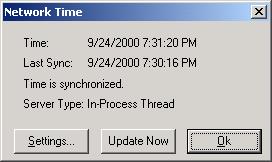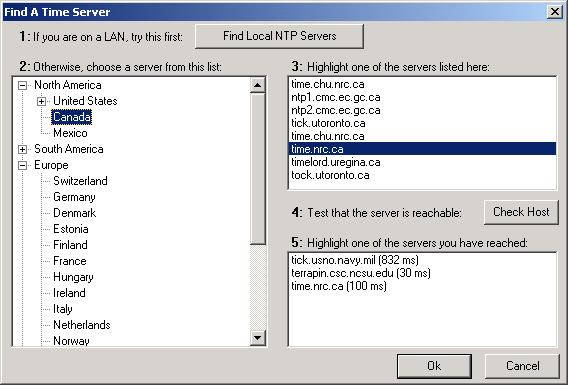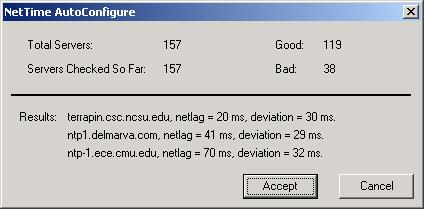
The following screen shots show the user interface for NetTime 2.0b3a. For best results, view this page maximized on an 800x600 or better browser.
 |
NetTime is a time synchronization
client for Windows 95, 98, NT and 2000. Its main claim to fame is that it
is small, simple and unobtrusive. It can synchronize with servers running
the NTP and RFC868 protocols, and can also function as a server so that
other computers can synchronize with the computer running NetTime.
The following screen shots show the user interface for NetTime 2.0b3a. For best results, view this page maximized on an 800x600 or better browser. |
| NetTime is designed to be unobtrusive. Most of the time, all you will see is an icon on your system tray. | |
| You can run NetTime as a regular application, as an NT service, or as a Win95/98 pseudo-service. The installer takes care of setting up whichever you decide you want. When NetTime runs as a service, you can still load the system tray icon, which connects to the service through shared memory. Either way, clicking on the icon gets you a quick view of NetTime's current status: |  |
| When you click on Settings, or when you first install NetTime, you can configure which time servers you want to connect to as well as various other settings. This is what the options screen looks like: |  |
| NetTime comes preloaded with a list of about 150 public NTP servers. This list is configurable through an INI file. You can type the name of whatever server you want, or you can click the "Find..." button to pick a server from the list. This is the screen from which you select a server: |  |
| But you don't have to use this screen at all if you don't want to. Your other choice is to click "Auto-Configure" which will check all servers on the list for availability, network lag time, and accuracy, like so: |  |